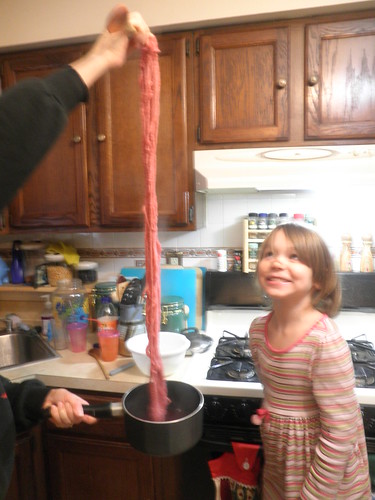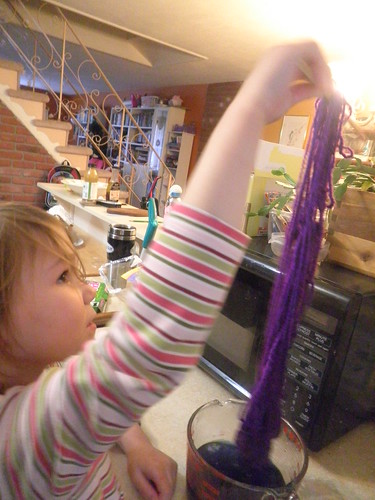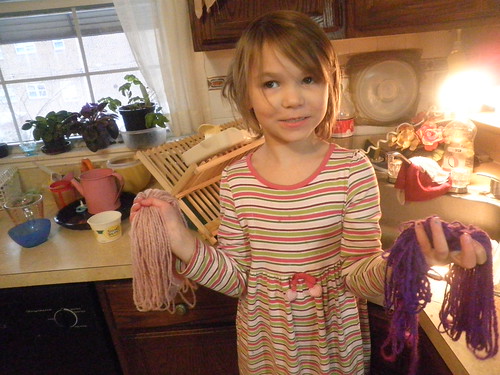In A New Coat for Anna, a young girl living in post-war Europe (country unspecified, but most likely Germany, The Netherlands or somewhere in Scandinavia from the names) needs a new coat but she and her mother have no money. So her mother gathers up their valuables and proceeds to trade them for the things needed to make a coat - wool from a farmer, spinning it into thread and weaving it into cloth, then finally a tailor to make the cloth into a coat. So K's grandmother came for Christmas bearing several wool fleeces and her spinning wheel. They started with spinning, a process that fascinated both children. They wound up spinning enough yarn for a pair of mittens.
Then came the really exciting part: dyeing. In Anna, Anna and her mother use lingonberries to dye the cloth. I considered going to IKEA and getting either lingonberry juice or lingonberry cordial for the dyeing, but I was a bit worried about the high sugar content and how well it might wash out (in retrospect, it occurred to me that people use things like blueberries which are quite sweet and they seem to come out okay, so it probably would have been fine). Then I saw

After a while, it was a nice dark pink and we took it out and rinsed it a couple times to get out the excess dye.

For variety, we also experimented with easter egg dye. K decided she wanted purple, but there was only one tablet, which didn't seem like enough, so I experimented with combining the blue and red/pink shades until I came up with a comparable purple color and mixed them together. We added the yarn and heated it in the microwave. Less than ten minutes later, we had a lovely purple yarn.

In the end, we wound up with one pink skein and one purple, which will be made into a lovely pair of striped mittens.

After taking a week off to go to Michigan, we started out this week talking a bit more about textile production. We read a bit on making cloth from cotton (from the every-useful What Do People Do All Day? by Richard Scarry), then pulled out the good old potholder loom for a lesson in weaving. K turned out not to be terribly interested, and after she played around with it enough to demonstrate that she understood how to weave, I decided she could probably happily live life without having made a highly synthetic potholder that will melt if used on something too hot and ended the lesson. I think I am going to try to teach her to knit soon - she was very excited about the idea of making a blanket for the baby, and while I think that will probably be too much for her attention span, she could certainly do a nice doll blanket, or maybe I could convince her to make a hat for the baby instead.
No comments:
Post a Comment